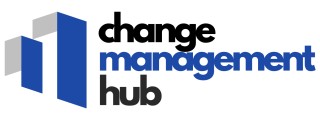
Understanding the Core Elements of Change Management
Key Fundamentals of Effective Change Management
Understanding the core elements of change management is crucial for organizations aiming to navigate the complexities of change effectively. At its essence, change management is a structured approach to transitioning individuals, teams, and organizations from a current state to a desired future state. This transition involves careful planning and execution to ensure minimal disruption and maximum engagement from all stakeholders.
The first step in crafting an effective change management policy involves defining the scope of change. By doing so, organizations can clearly outline what aspects of the business will be affected, whether it's a specific production environment or a company-wide system change. Allocating appropriate resources and establishing roles and responsibilities within the team is essential for clarity and accountability during the change process.
A solid change management process requires the establishment of a communication plan. Open and ongoing communication is vital to explain the purpose and benefits of the change initiative. This minimizes resistance and builds trust among team members and stakeholders. Furthermore, the policy should include a well-defined change control and configuration management process to manage and track change requests.
An approved change management policy acts as a structured guideline for handling standard changes, emergency requests, and policy changes. It should incorporate best practices and templates to ensure repeatability and consistency across various projects. The policy's effectiveness is often determined through regular reviews and adjustments based on feedback and the project's evolving needs.
For organizations facing frequent changes, a program management office often plays a crucial role in overseeing the change management plan and providing strategic direction. Enabling a culture that embraces change as an opportunity rather than a disruption can significantly impact the success of change management initiatives.
Understanding these foundational elements helps organizations develop a robust change management framework that facilitates successful organizational changes. For organizations seeking to refine their processes, a comprehensive guide to mastering IT documentation for effective change management can be invaluable.
Identifying Challenges in Change Management
Recognizing and Overcoming Hurdles in the Change Process
Change management is a complex arena, often laden with challenges that can disrupt even the most well-crafted plans. Understanding these obstacles is key to navigating the change with minimal friction and optimal results. First, gaining system-wide support often proves perplexing. Organizations frequently struggle with securing endorsement from all levels within the organization, from executives approving the management policy to staff executing the changes. This approval process can delay implementation and impact momentum. Secondly, the production environment itself may pose challenges. As changes are put into practice, unforeseen complications can crop up, disrupting daily operations or even the organizational change initiatives.Common Roadblocks to Watch Out For
- Lack of Communication: Effective communication plays a critical role in easing transitions. Without a robust communication plan, misunderstandings and resistance may increase.
- Inadequate Training: If staff members are not adequately prepared for changes, it can lead to resistance and affect the quality of service delivery.
- Resistance to Change: Always a classic hurdle, resistance stems from fear and uncertainty. Employees may view new processes or templates with skepticism, fearing implications for their roles and responsibilities.
- Scope Creep: As change requests are considered, it's crucial to maintain control over the project's scope. Unchecked, these changes can lead to delays and cost overruns.
Developing a Tailored Change Management Strategy
Crafting a Strategy Suited to Your Needs
Developing a tailored change management strategy is central to a successful transition in any organization. This process requires a keen understanding of both the external and internal factors influencing change within your business landscape. When crafting a strategy, consider the following elements:- Define the Scope of Change: The scope will outline the boundaries and limits to change initiatives, ensuring clarity in what the change encompasses. This involves setting the parameters of the changes, determining the resources needed, and evaluating potential impacts on the production environment.
- Roles and Responsibilities: Clearly defining roles responsibilities is crucial for accountability within the change management process. Who will oversee the change request? Who will lead the configuration management? These are questions that need answers to ensure a smooth transition.
- Change Control and Approval Process: Establishing a rigorous change control system is vital. This includes developing policies for change requests and approvals, addressing emergency changes, and ensuring pci compliance. A structured plan will prevent unauthorized changes that could disrupt the business.
- Communication Plan: Effective communication reduces resistance to changes. A detailed communication plan will help convey the benefits of the change initiatives, ensuring all stakeholders appreciate the project's value.
- Use of Templates and Best Practices: Implementing an approved policy template can standardize processes, aligning them with industry best practices. This assists organizations in maintaining consistency, even when faced with complex changes.
Implementing Change Management Policies Effectively
Ensuring Effective Implementation of Change Management Policies
Successfully implementing a change management policy requires an orchestrated effort to align the components of the management process. This includes establishing a clear communication plan, defining roles and responsibilities, and adhering to change control protocols. Below are the key steps and considerations to ensure a smooth implementation:- Clear Communication: A robust communication plan is essential to keep all stakeholders informed. It ensures everyone understands the purpose of the change initiative and the impact it may have on the organization. Regular updates should be provided to prevent any confusion or resistance.
- Defining Roles and Responsibilities: Clearly defined roles and responsibilities are crucial for successful change management. Assigning specific tasks to individuals helps in streamlining the management process and ensures accountability. It is important that everyone involved understands their role in the change initiative.
- Change Control Protocols: Implementing a change management policy requires strict adherence to change control protocols. This helps in managing change requests, the review process, and obtaining the necessary approvals to minimize disruptions in the production environment.
- Developing a Policy Template: A standardized policy template can serve as a guide for implementing changes. It aids in maintaining consistency across various projects and ensures compliance with organizational and regulatory standards like PCI compliance.
- Handling Standard Changes: Establish procedures for handling standard changes. These are routine changes that are pre-approved and require minimal assessment, thus ensuring efficient use of resources.
- Emergency Change Requests: Be prepared to address emergency change requests swiftly. A predefined procedure to manage such requests ensures that critical changes do not negatively impact the organization's operations.
- Configuration Management: Implement effective configuration management practices to track changes and maintain system integrity. This helps in tracing back any issues that may arise post-implementation.
Measuring the Success of Change Management Initiatives
Quantifying Outcomes of Change Initiatives
Measuring the success of change management initiatives is a critical aspect that ensures the effective integration of the changes within the organization. It involves a detailed assessment of how well the changes have been executed and their impact on the overall business objectives. Below are some key components to focus on:- Impact Assessment: Begin by evaluating the impact of the change on the organization. Look at both tangible results like increased productivity or sales and intangible effects such as improved employee morale or better customer service. This assessment will provide a clear picture of how the change has influenced the organization's landscape.
- Performance Metrics: Establish performance metrics aligned with the change management process to track progress. Metrics should include process efficiency, error rates, and user adoption levels. Comparing these metrics before and after the change can reveal its effectiveness.
- Review Sessions: Regular review sessions with stakeholders are essential to discuss the outcomes of the change initiatives. These sessions can help identify any areas that require further refinement and ensure that everyone is aligned with the change management policy.
- Feedback Mechanism: Implement a robust feedback mechanism to gather insights from employees involved in the change process. Their input is invaluable in revising the change management plan and ensuring it aligns more closely with organizational goals.
- Compliance and Standards: Ensuring that the change initiatives comply with necessary standards such as PCI compliance, aids in reducing risks associated with regulatory non-compliance. This highlights the need for incorporating a proper configuration management system to handle standard changes.
- Documentation: Maintain detailed records of all change requests, approvals, and implementations. This forms a comprehensive documentation trail that helps in future change initiatives and ensures easy accessibility during audits.
- Continuous Review and Adaptation: The organizational change is not a one-time event but a dynamic process that requires continuous review and adaptation. Regularly revising the management policy and incorporating lessons learned can greatly improve future change initiatives.
Adapting Change Management Policies for Future Challenges
Preparing for Ever-evolving Challenges
In a world where organizational change is inevitable, adapting your change management policies for future challenges is crucial. Being proactive in updating your management policy aids in ensuring that your organization remains resilient and agile. A significant component of future-proofing your change process is understanding the potential impacts of unforeseen challenges, such as economic shifts or technological advancements. By keeping a close eye on external trends, your leadership can anticipate changes and adjust your policy and implementation strategies accordingly.- Evaluate Organizational Needs: Periodically review the scope of your change management process to align with evolving business goals. This includes revisiting roles responsibilities and ensuring that your configuration management aligns with your overarching objectives.
- Continuous Learning and Flexibility: Encourage a culture of continuous learning within the organization to adapt effectively to standard changes. Flexibility is key in handling a broad range of change requests, whether they are approved or require emergency approval.
- Comprehensive Communication Plan: Maintain a robust communication plan to inform stakeholders about changes in policy and procedures. This keeps the production environment stable when adapting to new changes and ensures seamless project execution.
- Regular Policy Review: Set a schedule for regular review and approval of the change control process to handle organizational changes efficiently. This also includes keeping a policy template ready for swift updates as needed.
- Impact Assessment: Assess the impact of each significant change initiative, ensuring the management plan is agile enough to address unanticipated changes. Be prepared to adjust your strategy in response to new challenges.













